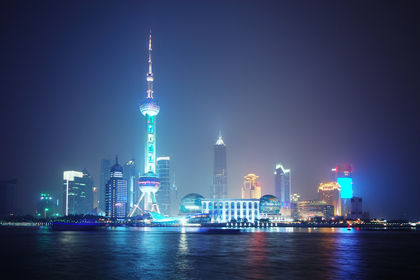China - International trade

International trade has been used to bring in new equipment and technologies and to meet scarcities in the domestic economy since China has sought to modernize its economy. Exports have been used as a means of producing foreign earnings to pay for the imports. The state has sought to maintain an even balance of trade so that the country can pay for imports rather than buying on credit. With 1.2 billion people and the world's fastest growing major economy, China is hailed as potentially the "market of all markets," which has helped to attract investments from around the world at such a magnitude that China is now the second largest recipient of foreign capital (next only to the United States). However, it has also given the government more reasons to carefully guard its market. The issue of market entry has been a contentious one, bogging down its negotiations to join the General Agreement on Tariffs and Trade and the World Trade Organization for over a decade.
The total volume of China's exports was US$232 billion ( f.o.b. , 2000), according to the CIA World Fact-book. The country's principal commodities are machinery and equipment, textiles and clothing, footwear, toys and sporting goods, and mineral fuels. The United States bought 21 percent of China's exports, Hong Kong 18 percent, and Japan 17 percent; Germany, South Korea, the Netherlands, the United Kingdom, Singapore, and Taiwan are other main export partners.
| Trade (expressed in billions of US$): China | ||
| Exports | Imports | |
| 1975 | 7.689 | 7.926 |
| 1980 | 18.099 | 19.941 |
| 1985 | 27.350 | 42.252 |
| 1990 | 62.091 | 53.345 |
| 1995 | 148.797 | 129.113 |
| 1998 | 183.589 | 140.305 |
| SOURCE: International Monetary Fund. International Financial Statistics Yearbook 1999. | ||
China exports agricultural commodities and goods (about one-third of total exports) and manufactured goods (about half), as well as mineral products such as oil and coal. Foodstuffs account for about 6 percent of total imports, and industrial supplies and materials such as crude steel and chemicals account for about 50 percent. The remainder consists chiefly of expensive capital goods such as machinery, precision instruments, and transportation equipment.
In 1998, machinery and transport equipment took the first place among the exports, amounting to 50.2 billion dollars. The proportion of it is 48.4 percent, much higher than the proportion of light and textile industrial products (26.5 percent). On the other hand, export structure of machinery and transport equipment is changing for the better. The proportion of more technologically-intensive products is growing up, and labor-intensive products are slowing down. Also, the interim structure of traditional export products, such as light and textile industrial products, changed tremendously. Resource and labor-intensive, low value-added, low-technological products declined, lower labor-extensive but higher technological and value-added products increased.
China imports a total volume of US$197 billion (2000). The principal commodities China imports are machinery and equipment, mineral fuels, plastics, iron and steel, and chemicals. Japan provides the main source (20 percent) of China's imports. The United States provides 12 percent, Taiwan 12 percent, and South Korea 10 percent. Other trading partners include Germany, Hong Kong, Russia, and Singapore.
The 5 top import products of China during the first semester in 1999 included mechanical and electrical products at US$35 billion (up 28 percent from 1998); plastics in primary form at US$4.1 billion (up 3.9 percent from 1998); steel products at US$3.4 billion (up 14.6 percent from 1998); computer parts at US$1.8 billion (up 18.7 percent from 1998); and crude petroleum oil at US$1.6 billion (down 23.6 percent from 1998). The commodities China imports are materials essential to modernizing China's economy and increasing export-oriented industries.